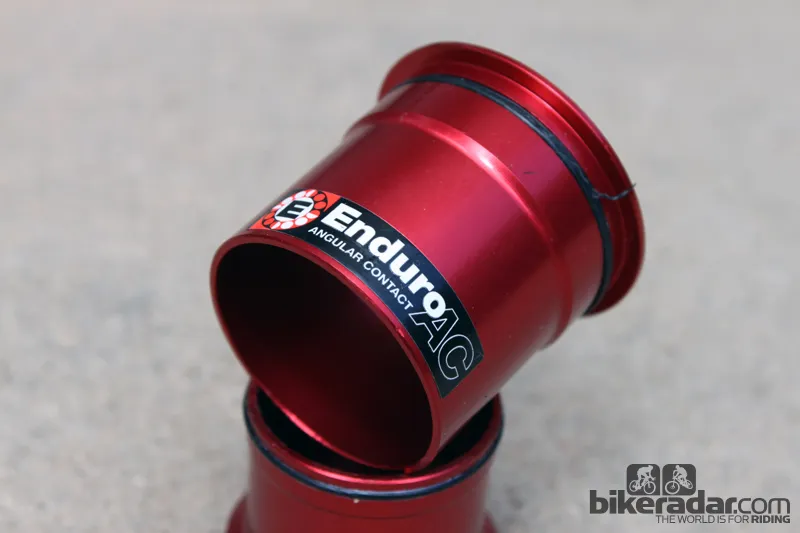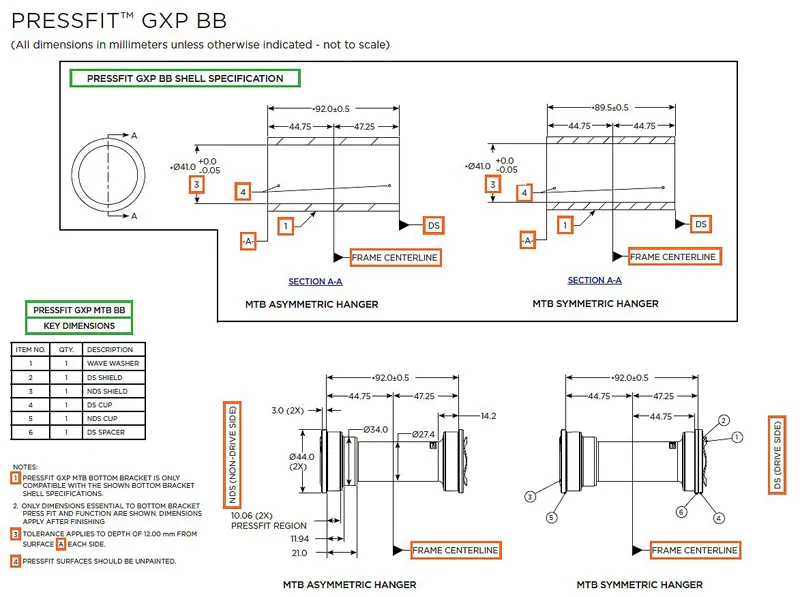Press-fit bottom brackets give me fits. I have no reservations about the design in theory, but their unpredictably sloppy execution is infuriating. They often just flat-out suck – but there are solutions. I'll give you five tips for silencing creaky bottom brackets but, first, here is a short primer on the causes of those annoying noises.
There are benefits to press-fit bottom bracket cups. They are lighter than traditional threaded cups because there's no metal sleeve required in the bottom bracket shell. They can also allow for wider shells and correspondingly bigger frame tubes, for improved stiffness without an adverse effect on pedal-stance width. From a manufacturing standpoint, they're also easier and less expensive to make.
Moreover, the idea of press-fit bearing cups on a bicycle has been well-proven for decades. The vast majority of you reading this are probably using headsets with press-fit cups that have been totally fine, with no creaks, squeaks, or premature bearing wear. And let's not forget BMX bottom brackets, which have always used press-fit cups and are regularly subjected to enormous constant and peak loads.
So why are so many of us having problems?
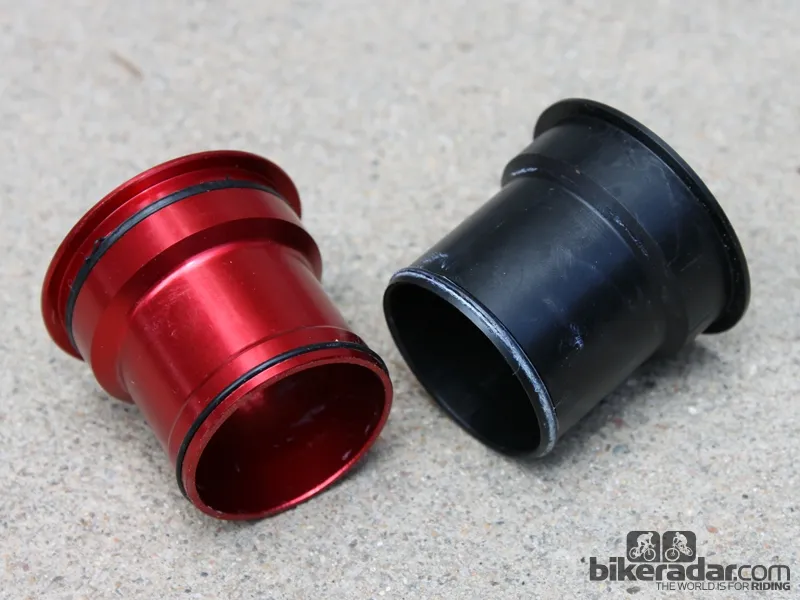
An aluminum cup (red) will last longer than a nylon cup (black) but you're increasingly likely to find the latter in modern bikes
Press-fits, tolerances, and squishy cups
Press-fit parts are reliant on the quality of the fit to work properly, and a small difference in diameter can produce a big variation in circumference and contact area. If the bore diameter is too big, the cup won't fit tightly, which can lead to creaking. If it's too small, the surrounding tube is overly stressed and, in extreme cases, can split. When there's a true interference fit in place, the two parts should function as a single unit.
Press-fit headset cups are subject to a very strict bore diameter tolerance of just 0.05mm (about the width of a human hair), which is a major reason why they continue to work so well. Usually, they install consistently tightly and don't creak or loosen up. They can also be removed and installed several times without issue.
Interestingly, Shimano and SRAM specify an identical allowable frame tolerance of 0.05mm for the bottom bracket shell bore diameter, but any mechanic worth their salt can attest that the real-world quality of fit on any given frame is highly variable.
Sometimes, cups are stubborn to press into the shell, generating too much bearing preload and shortening bearing life, while at other times they practically fall into place, making them prone to creaking. It's this inconsistency that's the root of problem.
"You can always tighten a thread; you can't do that with this system," said Park Tool's bike mechanic guru Calvin Jones. "The issue is that the industry is figuring this out as they go along. It's a race to the bottom. Let's just come out and say it – it's cheap to make."
Exacerbating the issue is the move toward carbon fiber shells instead of bonded-in aluminum models, which are heavier but can be more easily manufactured to precise tolerances.
And while headset cups are still metal, many press-fit bottom bracket cups are made of fiber-reinforced nylon. This reduces weight and cost, but what frame manufacturers really like is that the softer material is more tolerant of imperfections in the bottom bracket shell, for a better initial fit.
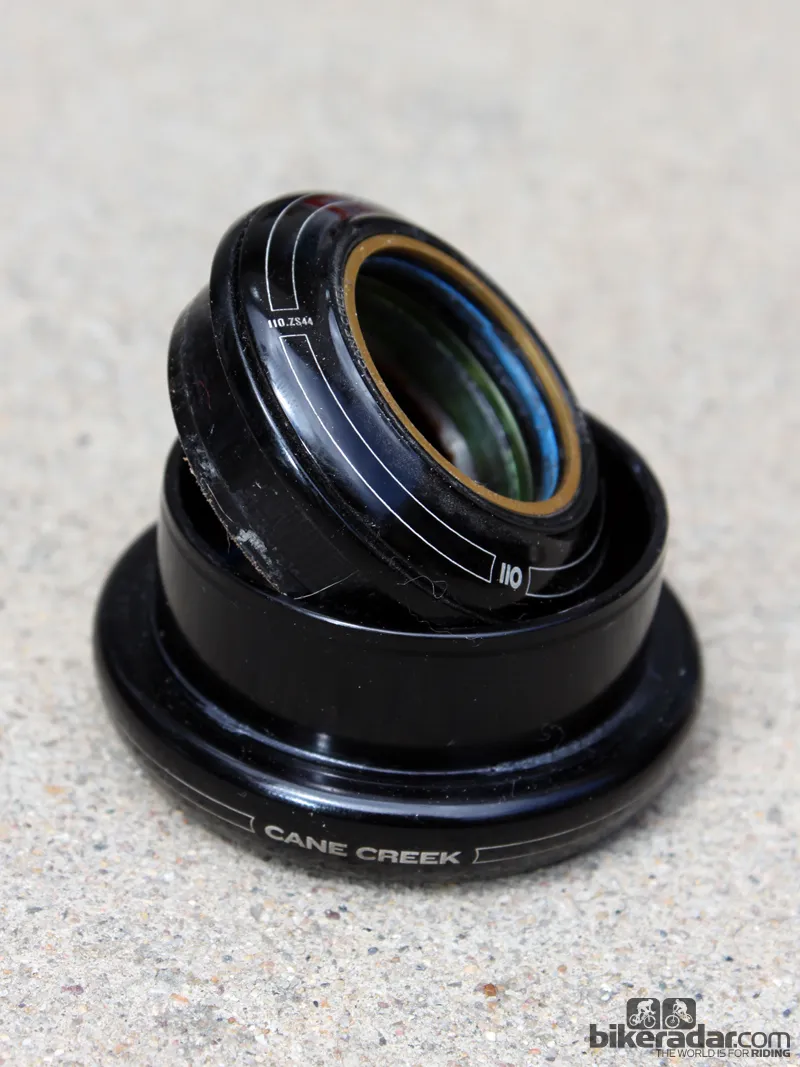
Headset cups are always metal. So why aren't bottom bracket cups?
Unfortunately, this also means the cup's dimensions can change over time under load. Plus, they can't be repeatedly removed and installed without altering the fit. The end result is that plastic cups eventually won't fit as tightly as they should, the fit won't be as secure as it should be, and you'll end up with that annoying creak.
"There's something philosophically wrong here. 'Give us this plastic, crappy cup because it pushes around and is quiet.' And that's going to fix the problem?" Jones said. "The design and manufacture of [press-fit] is that you ride it to death, then you replace it. That's the story. It's truly disposable."
The apparent deviation of frame manufacturers from specified tolerances is causing headaches for some bottom bracket suppliers, too. While a precisely machined aluminum bearing cup would theoretically offer the most consistent, repeatable, and exact fit (meaning fewer creaks and longer bearing life), it seems that not all frames can handle them.
"We saw the need to design a new bottom bracket cup that, instead of acting as a rigid shield around the bearing to ensure perfect preload by having the frame conform to 'bearing ideal' tolerances, has some give for full carbon frames," said Rotor's Phillip Lucas. "As much as the full aluminum design was ideal for bearing functionality, and easy to make consistently within optimum tolerances, it appears not all bikes could handle it."
"This left a few customers in difficult situations," Lucas continued. "As such, we've created a 'carbon conforming' cup as an addition to our UBB collection, to serve those with more demanding frames. The new design is gaining support from multiple manufacturers."
What to do
Even with the fundamental problems outlined above, there are a few things you can do to help silence your press-fit ride:
1. Start with a proper installation
Your bottom bracket shell is the foundation here, so it's best to start on a proper footing. Tools exist from Park Tool and other companies that will ream press-fit bottom bracket shells to the proper diameter, but they're expensive and the process isn't for the faint of heart, so is best left to a qualified shop mechanic.
Reaming will ensure your bottom bracket shell is consistently round and of the proper diameter, so that you stand a better chance of getting a good fit between the cup and frame.
Once you're confident that the dimensions are correct, make sure the mating surfaces are dry and clean. Grease works for quietening creaks, but only temporarily – plus, it can encourage movement if the fit isn't super tight to begin with.
Companies such as Cervélo have recently begun advocating the use of medium-strength retaining compounds such as Loctite 641 and 609, and I've had luck with both. Plastic and/or carbon surfaces should first be treated with Loctite primer to improve adhesion.
Such compounds cement the cups in place without requiring Herculean feats for removal down the road. They also won't break down over time like grease or anti-seize. For especially problematic bottom brackets, you might also try removing the bearing cartridges themselves from the cups and reinstalling them with sleeve-retaining compound.
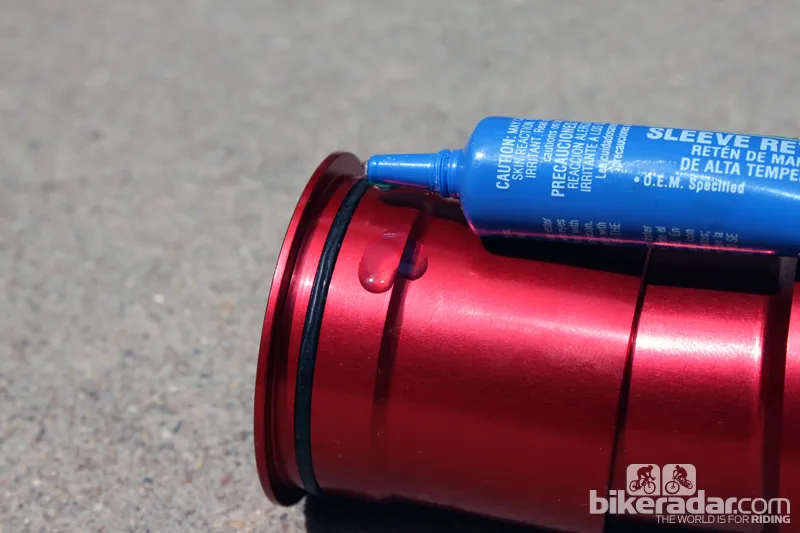
Sleeve-retaining compounds can work wonders
2. Ditch the plastic cups
As mentioned above, plastic cups are great in terms of weight and allowing for slight dimensional imperfections, but I haven't found them to be so wonderful long term. There are plenty of alternatives available that use precisely machined aluminum cups instead, from Chris King, Wheels Manufacturing, Rotor and others. Assuming the cups themselves were milled properly (and your shell is the right size), the fit should start out tight and stay that way.
3. Minimize the adapters
Every additional interface is another possible source of creaking, so if you're currently using a bunch of adapters and spacers to fit your 22mm-diameter crankset spindle into an oversized bottom bracket shell, consider using a dedicated adapter bottom bracket from a company such as Praxis Works or Rotor.
4. Don't forget about other interfaces
Your creak could well be coming from your bottom bracket cups shifting about inside the shell, but it could also be the spindle moving inside the bearing cartridges, your pedals rocking in the crank arms, or even your chainrings sliding against the spider tabs. Sleeve and thread retaining compounds will do the job here, but I still prefer grease.
5. Try an angular contact bottom bracket
Angular contact cartridge bearings aren't just highly tolerant of applied loads; they actually rely on them to function properly. Companies such as Enduro and Wheels Manufacturing have recently introduced press-fit bottom brackets built with angular contact bearings that are squeezed in between the crank arms with a surprising amount of pressure. In addition to the phenomenal bearing longevity we've encountered, that pressure also seems to help keep everything from shifting under load.
All is not lost
Most people won't argue with the idea that press-fit bottom brackets can be highly problematic, but there's no good reason why they can't work, and work well. A few small steps can mean the difference between a ride that's peaceful and fun, and one that's irritating.
However, it would be nice if offending frame-makers could get their acts together and produce what they say they're going to, so that customers don't have to deal with these problems to begin with. Given some of the astronomical price tags floating around these days, consumers should expect – and demand – better.
James Huang has been writing about bicycle tech since 2005 but also has more than 14 years of experience as a shop mechanic. In that time he's seen plenty of fantastic gear and technology but also a lot of things that flat-out piss him off. You can follow the 'Angry Asian' on Twitter at @angryasian.
